5 Questions with South African film director and artist, Ralph Ziman
Feb 3, 2020
Today we chat with Ralph Ziman, the mastermind behind The Casspir Project, an unprecedented and multifaceted undertaking comprised of installation, photography, oral history, and documentary. We had the absolute pleasure of seeing the restored Casspir vehicle firsthand at Pulse Art Fair 2019 in Miami. Its surface is fully covered in elaborate, brightly colored panels of glass beadwork, arranged in traditional patterns. At first glance, it makes your heart skip a beat. But once you hear the sentiment behind it - the mark of the heavy hand of apartheid oppression turned joyful symbol of reconciliation – it fosters a much deeper dialogue of where we are going and what kind of world we want to live in. Meeting Ralph was a highlight for us on that trip to Miami, so we wanted to take this opportunity to introduce him here, to all of you. We sat down for a chat with the South African artist, photographer, filmmaker, and advocate who now calls Los Angeles home.
"A Lone Woman Protests As Soldiers In Armored Vehicles Enter Her Township". C-print on Kodak Endura Paper. 44 x 115 inches, Edition of 5, Courtesy of Ralph Ziman
Your work is known to bear upon a sense of social responsibility toward global politics. What human rights issues does The Casspir Project address?
The Casspir Project speaks to the militarization of police forces around the world. The Casspir was designed by and for the South African Police for quelling civil unrest and policing urban populations. It begs the question, “Why does policing in the West today resemble apartheid policing in 1977?”
Ralph Ziman, SPOEK 1, Installed at PULSE Art Fair, December 2019
How many South African artists worked on this Casspir and for how long? How did you recruit them?
There were about a hundred local artists and craftsmen and women who collaborated on the Casspir, which took nearly 3 years to complete. It was an organic process. We brought in more people as we needed them and their skills. The collaborations began when I met a group of Zimbabwean street vendors who at the time were making small beaded animal sculptures out of beads and wire. They eventually introduced me to Thenjiwe, an artisan from the Ndebele tribe of South African’s Mpumalanga province who specialized in needlework, and our team continued to grow from there.
Interior of SPOEK 1
How are you challenging the viewer with this brightly coloured, exuberant installation?
I am trying to get people to look at familiar objects with a new perspective. The Casspir was feared and hated in the townships of South Africa, its shape familiar like that of a cobra snake or a black widow spider. After it was covered in beads, people felt that it was not a threat and that they could approach it, touch it, and talk about their memories of the vehicle and apartheid. There is a belief in African culture that when you touch something, you take away its power.
It was a process of healing. For me, for the artisans, and for the people we spoke to.
Ralph Ziman, SPOEK 1, Installed at The Rendon Gallery, February 2019
How is the project received in America compared to in South Africa?
I have been amazed by how well it has been received wherever it has gone. There is a story to tell beyond the beauty of the beads and the bright colors. It is the story of how this vehicle, this symbol of oppression invented in apartheid South Africa made its way to the USA and how they are still being used today to police urban communities in America. People want to hear this story and ask questions about what is behind the project.
Is the colourful Casspir street-legal? In other words, could you drive it to the store to pick up eggs?
Technically it is street legal. Everything works, and the engine is remanufactured to factory specifications. The headlights are clear glass beads, the break lights clear red glass beads. We have driven it across Johannesburg, about 15 miles. That said, it is not legal to drive an unlicensed military vehicle on the streets. As for the eggs, it is a little bumpy so I would suggest they are hard boiled.
Detail of SPOEK 1
Please read more about Ralph and his work here.

:sharpen(level=0):output(format=jpeg)/wp-content/uploads/2020/02/5-Questions-with-South-African-film-director-and-artist-Ralph-Ziman-1.jpg)
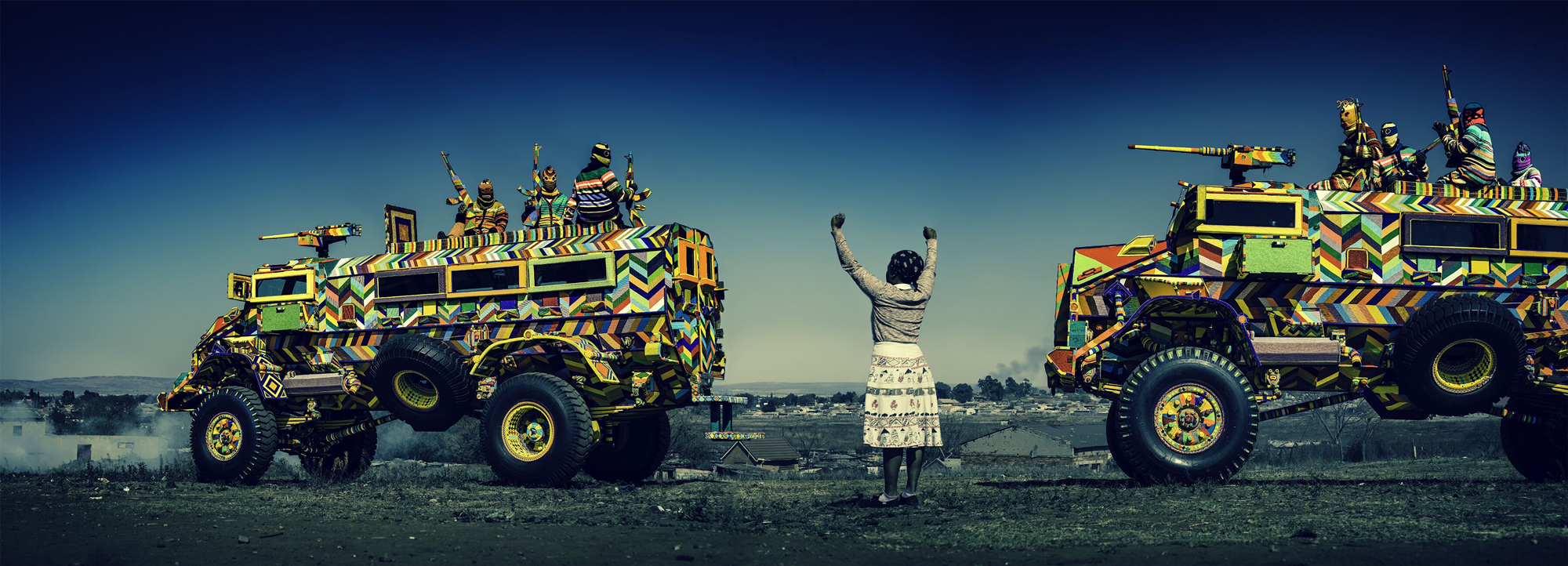
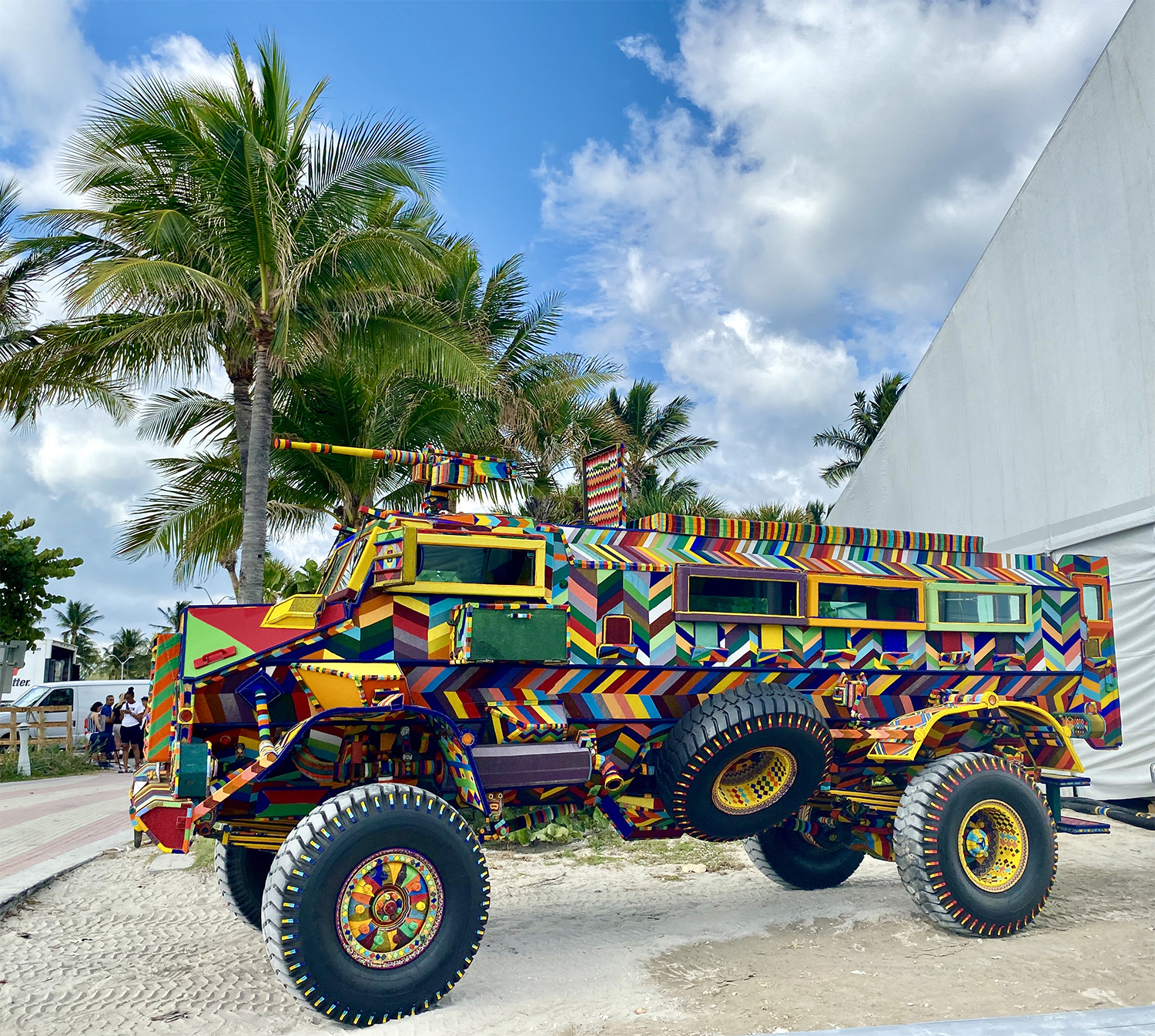
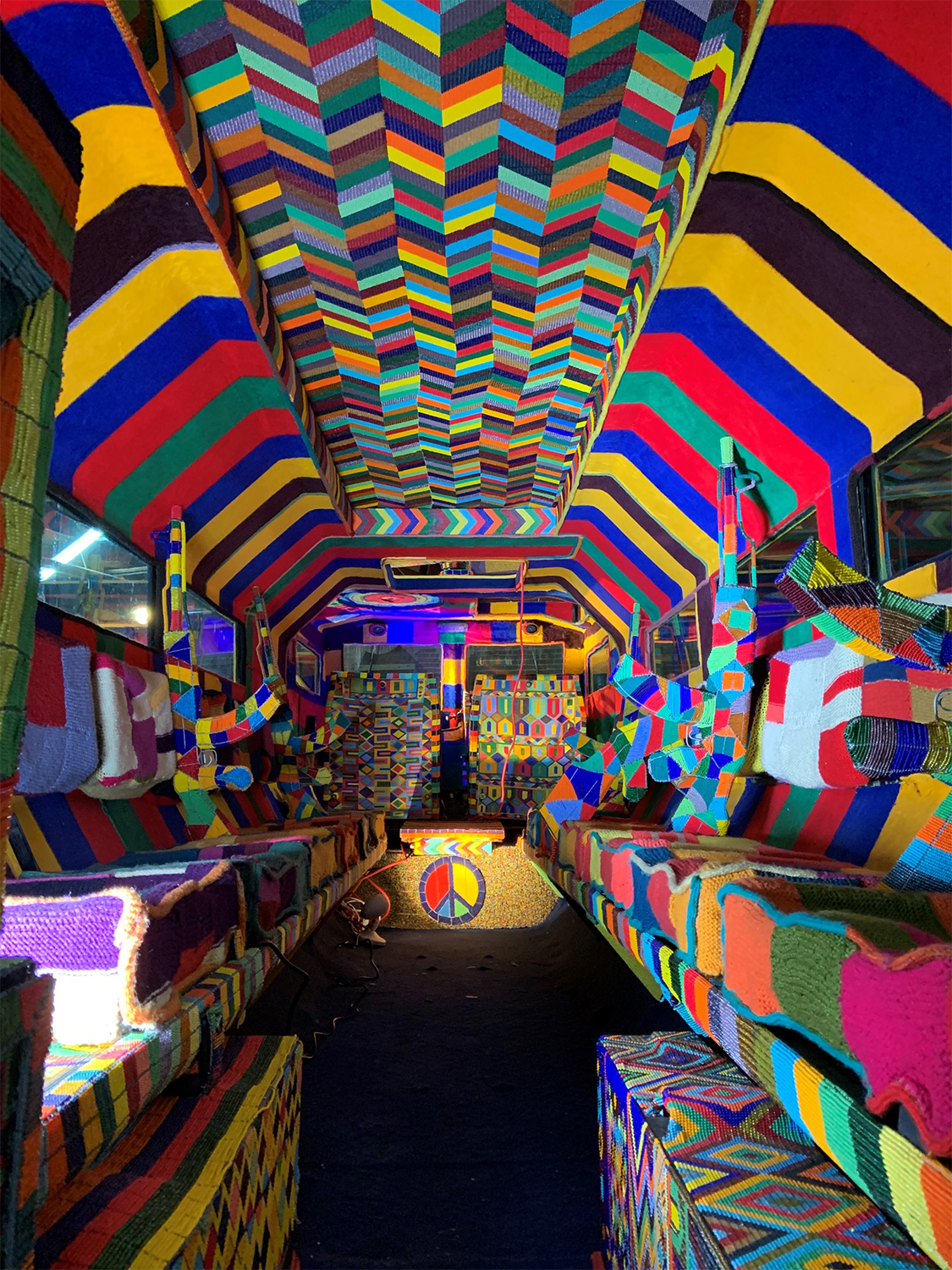
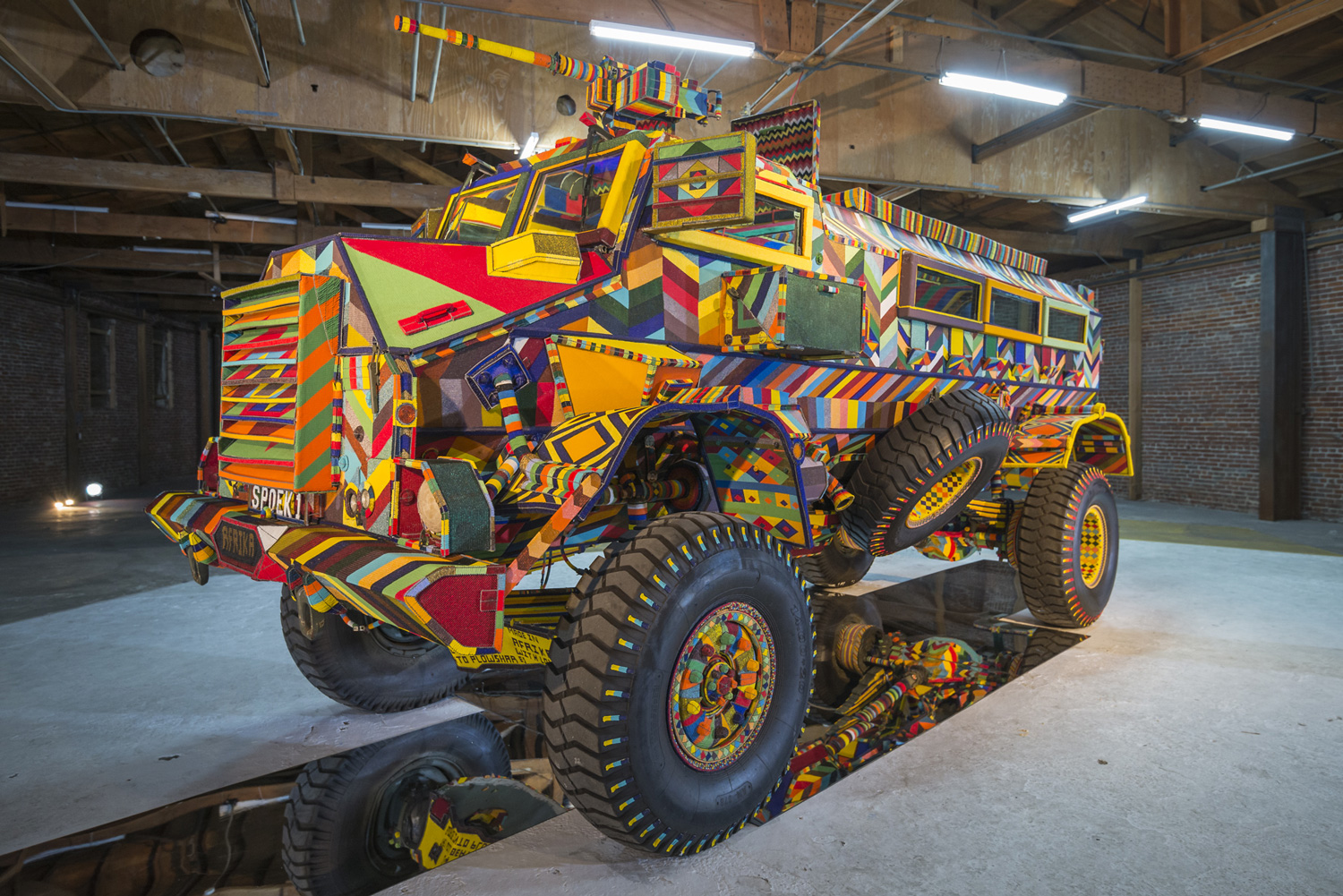
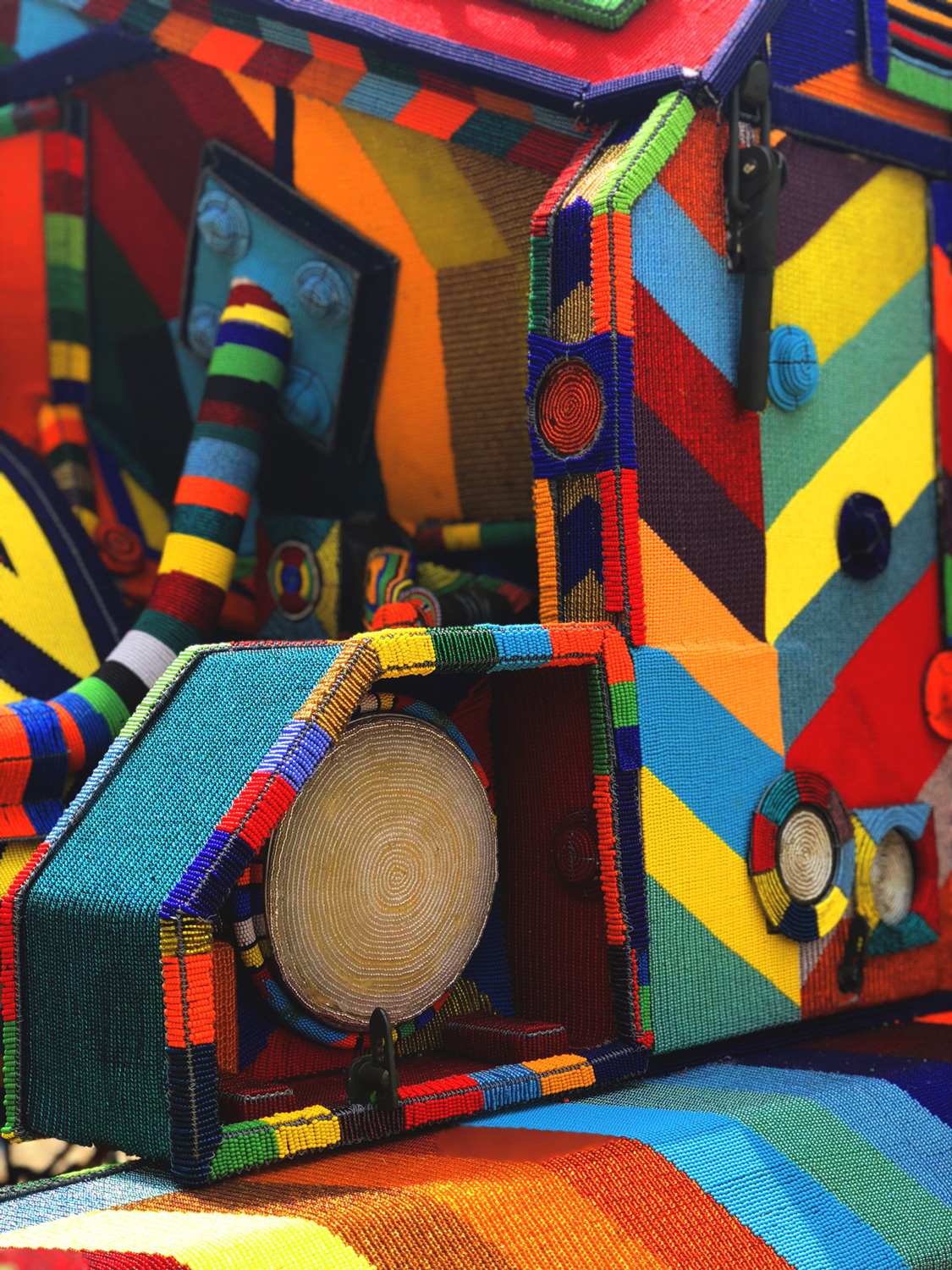
:sharpen(level=1):output(format=jpeg)/wp-content/uploads/2024/05/The-Art-Lawyers-Diary-1.jpg)
:sharpen(level=1):output(format=jpeg)/wp-content/uploads/2024/04/5-Questions-with-Bianca-Cutait-part-2-1.jpg)
:sharpen(level=1):output(format=jpeg)/wp-content/uploads/2024/05/20231208_164023-scaled-e1714747141683.jpg)
:sharpen(level=1):output(format=jpeg)/wp-content/uploads/2024/04/header.jpg)
:sharpen(level=1):output(format=jpeg)/wp-content/uploads/2024/04/5-Questions-with-Bianca-Cutait-part-1-1.jpg)
:sharpen(level=1):output(format=jpeg)/wp-content/uploads/2024/03/5-Questions-with-Alaina-Simone-1.jpg)